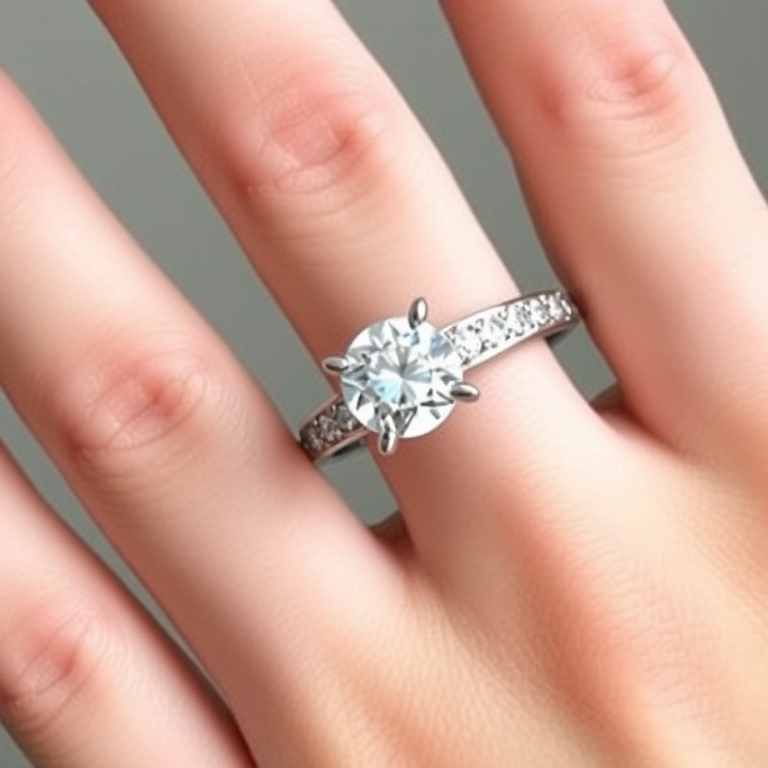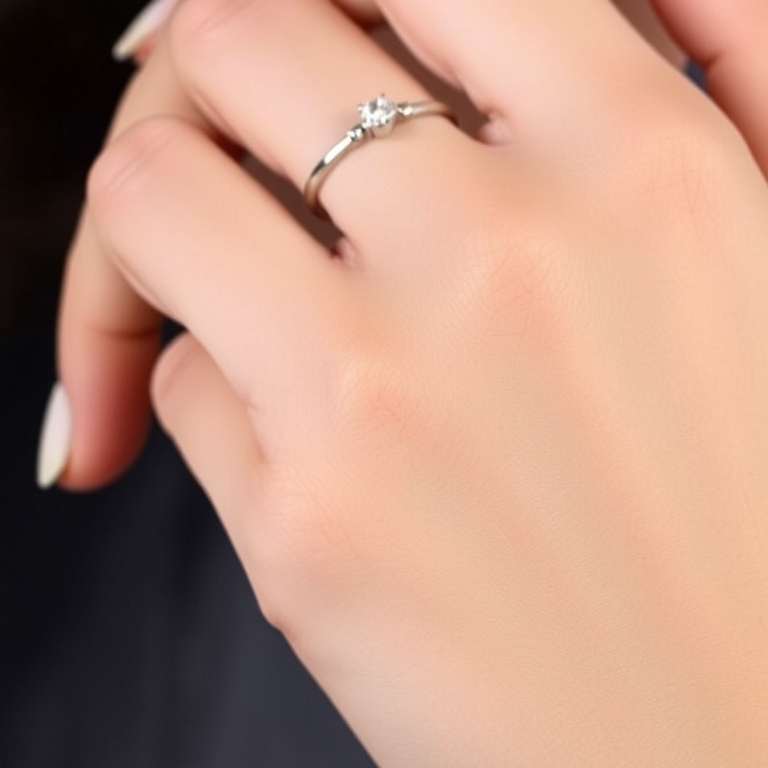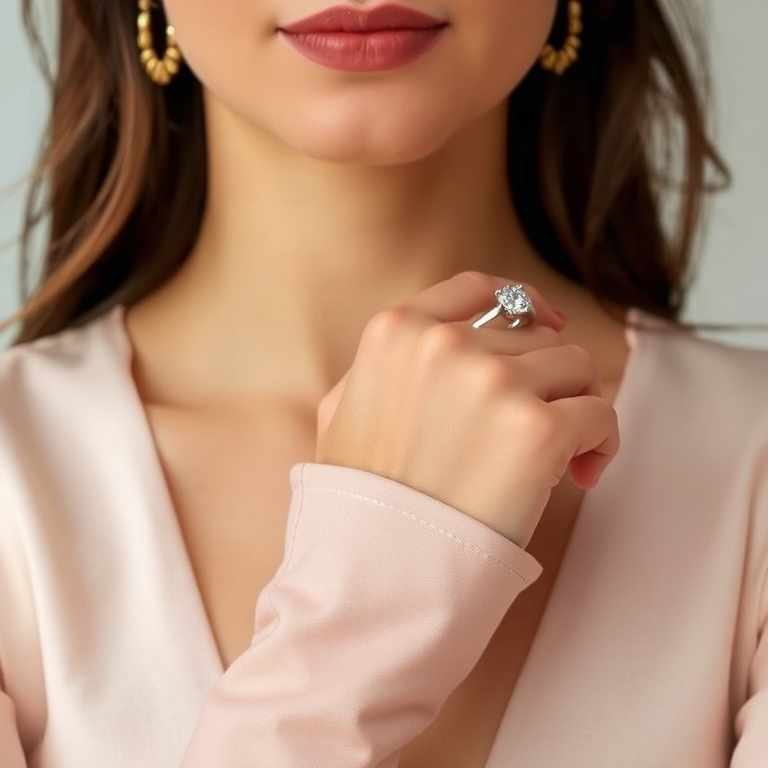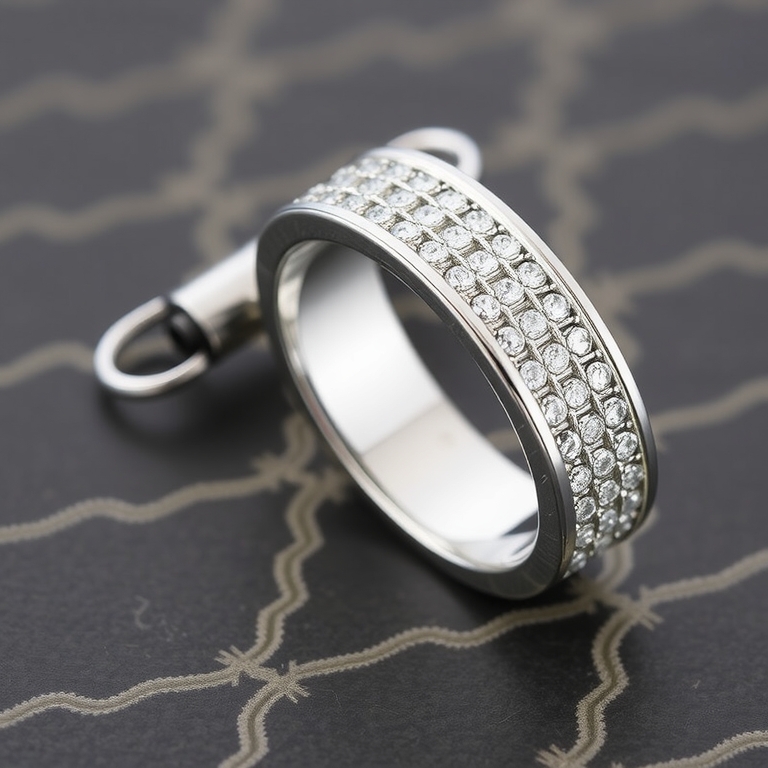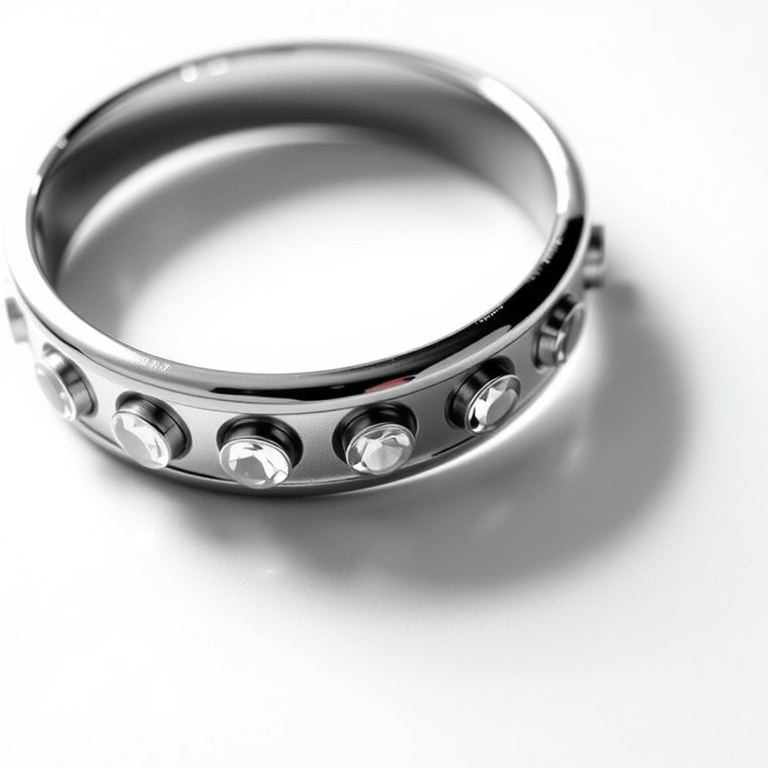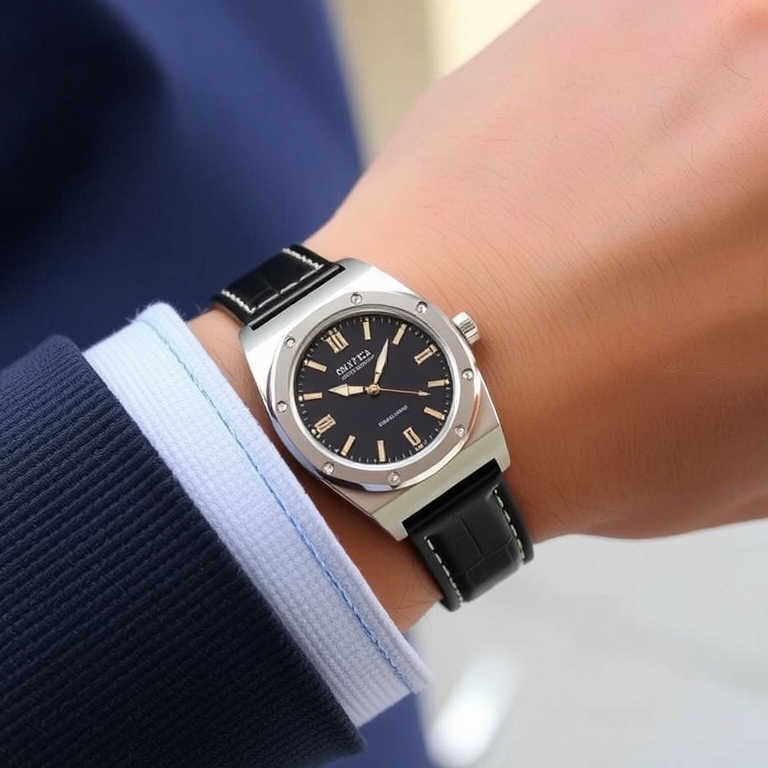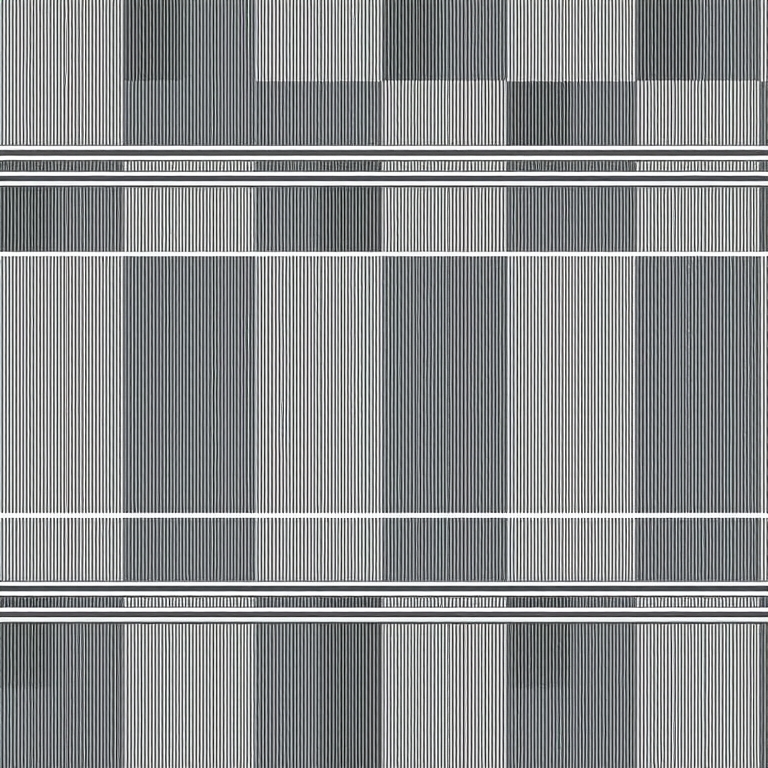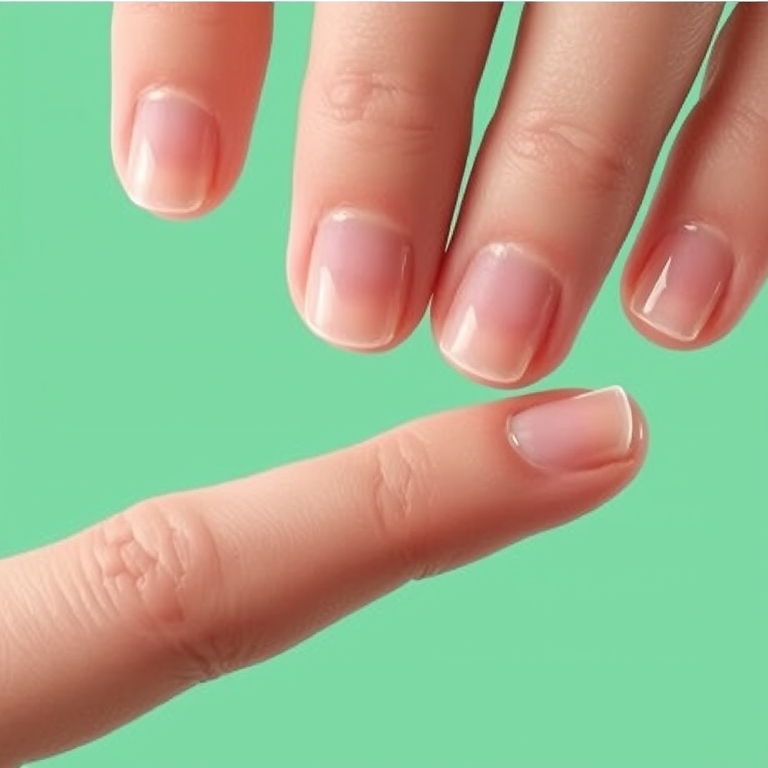Choosing the right wedding band to pair with your stunning engagement ring is a crucial decision. The band’s width significantly impacts the overall look, affecting how your engagement ring’s brilliance is displayed.
This article explores eleven exceptional band width ideas, offering insights into how different widths complement various engagement ring styles and finger sizes. We’ll cover everything from subtle, delicate bands to bolder, statement pieces, ensuring you find the perfect match.
Remember, personal style is key! Ultimately, the best band width is the one that feels most comfortable and reflects your unique personality. Let’s dive into the options!
-
Delicate 1mm Band: Subtle Elegance

Delicate 1mm Band: Subtle Elegance A delicate 1mm band offers understated elegance, allowing your engagement ring to take center stage. Its slim profile complements solitaire diamonds and smaller stones beautifully. Consider a simple, polished finish for a classic look, or opt for a slightly textured surface for added visual interest.
This thin band is incredibly versatile. It works well with various ring styles, from vintage-inspired settings to modern designs. Pair it with a matching wedding band for a cohesive look, or wear it solo for a minimalist aesthetic. The subtle width won’t overpower even the most intricate engagement ring.
For a touch of personality, explore different metal choices. A platinum band offers durability and a luxurious sheen, while yellow or rose gold adds warmth and a softer contrast. You can even experiment with mixed metals, such as a rose gold band with a platinum engagement ring, for a unique and stylish effect.
Remember to consider your lifestyle when choosing a band width. A 1mm band, while beautiful, might be more prone to bending with daily wear than a wider band. If you have concerns about durability, you can choose a harder metal like platinum or have the band slightly thicker, perhaps at 1.2mm or 1.5mm, while maintaining a delicate feel.
-
Classic 2mm Band: Timelessly Chic

Classic 2mm Band: Timelessly Chic A classic 2mm band offers understated elegance and complements most engagement ring styles. Its slim profile won’t overpower a delicate solitaire or compete with a larger, more intricate design. Consider a simple polished finish for a timeless look, or opt for a subtle texture like a brushed finish for added interest.
This width provides a comfortable fit for everyday wear without being too bulky. The 2mm band is versatile enough for stacking with other rings, creating a personalized look. Experiment with different metals like yellow gold, white gold, or platinum to match your engagement ring and personal preference.
For a slightly bolder statement, consider a 2.5mm band, maintaining a similar aesthetic but with a slightly more prominent presence. This small increase maintains the delicate balance, yet offers a noticeably different style. This width also provides slightly more surface area for engravings or unique detailing.
Ultimately, the best choice depends on your engagement ring’s design and your personal style. Remember to try on different widths to see how they feel and look with your ring. A jeweler can offer expert advice and help you choose the perfect complement to your engagement ring.
-
Mid-Width 3mm Band: Versatile Choice

Mid-Width 3mm Band: Versatile Choice A 3mm mid-width band offers a versatile option that complements most engagement ring styles without overpowering them. Its subtle presence allows your engagement ring to take center stage while adding a touch of elegance. Consider a simple, polished finish for a classic look or opt for a slightly textured surface for added visual interest.
This width works particularly well with solitaire or three-stone engagement rings. The band’s delicate width provides a beautiful contrast against the larger center stone(s) without competing for attention. Pair a 3mm band with a pave setting for a touch of sparkle that harmonizes seamlessly with the band’s understated elegance.
For a more personalized touch, explore different metal choices like yellow gold, rose gold, white gold, or platinum. Each metal imparts a unique character to the band, allowing you to perfectly match your existing jewelry or create a new contrast with your engagement ring’s metal. Matching the metal is a classic choice, while contrasting metals can create a more modern and striking look.
Simple variations include adding small, subtly incorporated diamonds or other gemstones along the band’s edges. This adds a touch of sparkle without detracting from the engagement ring’s design. Alternatively, consider a milgrain edging for a touch of vintage charm and intricate detail.
-
Statement 4mm Band: Bold and Beautiful

Statement 4mm Band: Bold and Beautiful A 4mm wide band offers a substantial presence without overwhelming a statement engagement ring. Its bold width provides a striking contrast, especially with solitaire or three-stone settings. Consider a simple, polished finish for a classic look, or opt for a lightly hammered texture for added visual interest.
For a touch of elegance, choose a 4mm band in a precious metal like platinum or 18k gold. These metals enhance the brilliance of most gemstones. A matching metal to the engagement ring creates a cohesive and luxurious feel, while a contrasting metal offers a stylish juxtaposition.
If you prefer a more unique look, explore variations like a milgrain edge or subtle detailing. These additions add personality without sacrificing the band’s substantial presence. A slightly domed profile can also create a comfortable and sophisticated feel.
Ultimately, the best choice depends on personal preference and the style of your engagement ring. Experiment with different metals and finishes to find the perfect 4mm band that complements your unique style and beautifully showcases your engagement ring’s sparkle.
-
Modern 5mm Band: Striking Contrast

Modern 5mm Band: Striking Contrast A 5mm band offers a modern, striking contrast to most engagement rings, especially those with intricate details or larger center stones. The width is substantial enough to make a statement on its own, yet avoids overwhelming the engagement ring. Consider a sleek, simple design in platinum or white gold for a minimalist aesthetic.
For a touch of warmth, opt for a 5mm yellow gold band. This adds a classic yet contemporary feel, complementing both warmer and cooler-toned engagement rings. Experiment with subtle textures like a hammered finish for added visual interest without being too distracting.
If your engagement ring features a significant gemstone, a 5mm band in a contrasting metal can beautifully highlight its brilliance. A rose gold band against a white diamond, for instance, creates a sophisticated and romantic look. Matching the metal of the engagement ring is always a safe bet, too.
Consider adding small diamonds or gemstones along the band for extra sparkle. These accents should be subtly incorporated so they don’t detract from the engagement ring. A 5mm band provides the perfect canvas for understated elegance – simple is often best.
-
Substantial 6mm Band: Making a Statement

Substantial 6mm Band: Making a Statement A 6mm wide band offers a substantial presence, perfectly complementing a larger or more intricate engagement ring. Its generous width provides a strong visual counterpoint, preventing the engagement ring from appearing dwarfed. Consider a simple, polished finish for a classic look, or opt for a subtle texture like hammered or brushed metal for added visual interest.
For those who love a touch of sparkle, a 6mm band paved with small diamonds or gemstones can create a dazzling effect. This adds subtle shimmer without overpowering the engagement ring. Alternatively, a contrasting metal like rose gold paired with a yellow gold engagement ring introduces a sophisticated pop of color.
A 6mm band’s versatility allows for a variety of profiles. A gently curved or softly rounded interior offers enhanced comfort for daily wear, particularly important given its width. Explore options like a D-shape profile for a more modern aesthetic, or a comfort-fit design for maximum ease.
Remember to consider the overall style of your engagement ring when selecting a band width. A delicate engagement ring might appear overwhelmed by an overly substantial band, whereas a large, bold ring will benefit from the strong visual balance provided by a 6mm width. Experiment with different metals and finishes to find the perfect match for your personality and style.
-
Matching Band Width: Seamless Harmony

Matching Band Width: Seamless Harmony Consider a wedding band with a width that mirrors your engagement ring’s band. If your engagement ring has a 2mm band, a 2mm wedding band creates a cohesive and elegant look. This classic approach ensures both rings complement each other seamlessly, offering a balanced and harmonious aesthetic. Slight variations of +/- 0.5mm are also perfectly acceptable for a similar effect.
For a bolder statement, opt for a wedding band slightly wider than your engagement ring. A 3mm band paired with a 2mm engagement ring adds visual weight and impact. This approach is particularly striking with solitaire engagement rings, drawing more attention to the center stone. Remember to consider the overall style; a delicate ring might look overwhelmed by an excessively wide band.
Conversely, a narrower band can subtly enhance a larger or more ornate engagement ring. A 1.5mm band with a 3mm engagement ring offers a refined contrast. This approach allows the engagement ring to take center stage while the wedding band provides a delicate touch of elegance. The subtler band allows the engagement ring’s intricate detailing to shine.
Experiment with different widths in person to see what feels and looks most comfortable and aesthetically pleasing on your hand. Ultimately, the best width depends on your personal preference and the overall style of your rings. Don’t hesitate to try on various combinations to discover the perfect balance and harmony between your engagement and wedding bands.
-
Contrasting Band Width: Playful Contrast

Contrasting Band Width: Playful Contrast A playful contrast in band width is a stylish way to showcase your engagement ring. A thinner wedding band allows the engagement ring’s details to shine, preventing visual competition. Consider a delicate band in a contrasting metal, like a rose gold band with a platinum engagement ring, for a touch of elegance.
For a bolder contrast, pair a wider wedding band with a slimmer engagement ring. This creates a striking visual impact. A wider band adds substance and can complement a solitaire diamond or a minimalist design beautifully. Experiment with different textures, such as a hammered finish on the wider band, to enhance the contrast.
Alternatively, opt for a stacking band approach. A thin band and a medium band, stacked together, will create an interesting and stylish contrast to any center stone. The stacked bands add a touch of sophistication and enhance the overall visual appeal. Consider coordinating metals and finishes.
To summarize, consider your engagement ring’s design when choosing a contrasting band width. A slim band allows your ring to take center stage, while a wider band provides a striking counterpoint. Stacking offers versatility, allowing you to play with different widths and create a unique look.
-
Consider Your Finger Size: Proportion Matters

Consider Your Finger Size: Proportion Matters Choosing the right band width for your engagement ring is crucial for showcasing its beauty and ensuring a comfortable fit. A slender finger looks best with a thinner band, while thicker fingers can handle wider bands without overwhelming the hand. Experiment with different widths to see what proportions look best on your finger; don’t be afraid to try on various styles.
For a delicate engagement ring with a small center stone, opt for a thin band—perhaps 1.5mm to 2mm wide. This keeps the focus on the ring’s intricate details without competing for attention. A slightly wider band, around 2.5mm, adds a touch of elegance while still maintaining a subtle look. Consider the overall design of the engagement ring and choose a band width that complements its style.
If your engagement ring features a larger center stone or a bolder design, a slightly wider band—between 3mm and 5mm—can create a balanced and substantial look. A wider band provides a more secure setting and adds visual weight, preventing the ring from appearing too dainty against a larger stone. Playing with variations within this range allows for subtle adjustments based on personal preference and finger size.
Ultimately, the ideal band width is subjective and depends on personal style and the engagement ring itself. Remember to consider your personal preferences and lifestyle. A professional jeweler can offer valuable insights and help you choose the perfect band width to complement your unique engagement ring and enhance its beauty.
-
Embrace Comfort and Everyday Wear

Embrace Comfort and Everyday Wear Choosing a ring band width that complements your engagement ring while ensuring comfort is key. A band slightly thinner than your engagement ring creates a delicate balance, allowing the center stone to shine. Consider a half-round or slightly domed profile for a comfortable fit that won’t snag on clothing.
For a bolder look, opt for a band width similar to or slightly wider than your engagement ring. This creates a strong, cohesive look, especially with larger center stones or intricate settings. A flat profile offers a modern, sleek appearance, whereas a milgrain edge adds vintage charm.
If you prefer a more understated style, choose a very thin band. This approach emphasizes the elegance of your engagement ring without overwhelming it. A simple, polished finish is ideal, and you can experiment with different metals to personalize the look further.
Ultimately, the best band width is a matter of personal preference and lifestyle. Try on various widths to see what feels most comfortable and visually appealing. Don’t hesitate to experiment with different metal types and finishes to create a truly unique and stylish pairing.
-
Explore Different Metal Types: Enhancing the Look

Explore Different Metal Types: Enhancing the Look Choosing the right metal for your wedding band can dramatically impact how your engagement ring looks. Consider contrasting metals for a striking effect; a yellow gold engagement ring paired with a platinum band creates a beautiful juxtaposition. Alternatively, matching metals provides a cohesive and classic look. Experiment with different finishes, such as matte or polished, to add subtle visual interest.
The width of your wedding band also plays a crucial role in showcasing your engagement ring. A thinner band allows the engagement ring’s details to take center stage, while a wider band creates a bolder, more substantial look. Consider the size of your engagement ring; a larger ring might benefit from a wider band to maintain visual balance. A slightly wider band can also offer more comfort and durability.
Think about the overall style you’re aiming for. A delicate engagement ring might look overwhelmed by a thick band, while a substantial engagement ring could be lost against a thin one. For a more modern look, consider bands with unique textures or detailing. Simple designs often complement elaborate engagement rings best, avoiding visual clutter.
Ultimately, the best band width is a personal choice. Experiment with different widths and metals in person to see what feels most comfortable and visually appealing with your engagement ring. Don’t hesitate to seek professional advice from a jeweler; they can offer valuable insights based on your ring’s design and personal style preferences.
Editor’s Recommendations
- Try on various widths to determine what feels most comfortable.
- Consider your engagement ring’s style and size when choosing your band width.
- Don’t be afraid to experiment with different metal types and finishes.
Conclusion
Selecting the perfect wedding band width is a deeply personal journey, one that reflects your style and the unique bond you share.
Remember to consider your engagement ring’s style, your finger size, and your personal preferences. Don’t be afraid to experiment and find the perfect balance of comfort and aesthetics.
Ultimately, the best band is the one that makes you feel confident and beautiful – a constant reminder of your love story.

